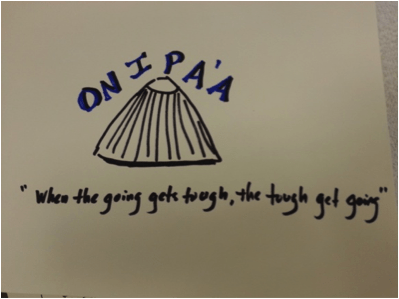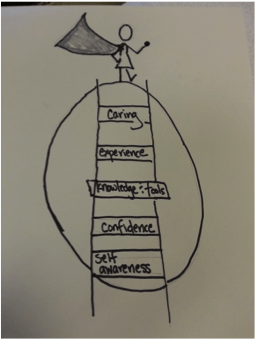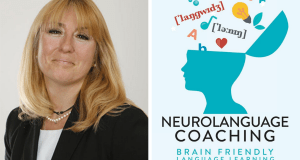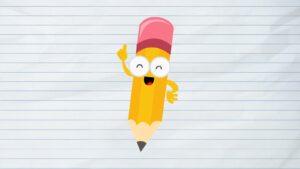The Growth Mindset and Language Learning
Luckily, there are a host of easy ways to slip in the growth mindset in education .Any teacher knows that one of the biggest obstacles in education has nothing to do with academic knowledge or measurable skills written into standards. No, it has to do with motivation, organization, confidence, and a host of other “soft skills,” which can end up hardening a student’s perspective on school and cementing their pathway in life. But these areas aren’t graded, they’re not tested, and we don’t receive official school reports—or incentives—to interweave lessons on perseverance into our curriculum. We should. I teach a beginning composition class where the demographic is often dominated by developmental and English Language learners—groups that could greatly benefit from learning not only writing skills, but how to deal with setbacks and grow from challenges.
“Growth Mindset”
This idea of “growth mindset” kept re-appearing around me—from workshops at conferences to casual conversations. So I decided to look into it. Carol Dweck, who first coined the phrase, explains how a growth mindset exists when people believe their abilities and intelligence can be developed through hard work and persistence. It promotes the notion that we learn and grow from challenges that arise. A fixed mindset means a person believes they have a limited capacity and cannot go beyond it. If they believe they just don’t have the aptitude for math, they figure why even try.
The brain is a muscle
This is a tale as old as time—that hard work and dedication matter and can be the tipping point that makes the difference. But, just because it’s an old idea doesn’t mean that it isn’t true. Fresh packaging emphasizes that the brain is a muscle. Thinking, and being frustrated while thinking, helps that muscle grow stronger. Understanding that idea can inspire students to work through tough problems.
I use Youtube videos to introduce this concept in fun, visual ways. “The Growth Mindset,” published by Khan Academy, features Salman Khan interviewing Carol Dweck and “Growth Mindset Video” produced by University of California Agriculture and Natural Resources are favorites of mine.
Grit
Okay, now students know what a it is, but how do they feed a growth mindset? With another popular term: grit. Angela Duckworth says “Grit is passion and perseverance for very long term goals…sticking with your future…and working really hard to make that future a reality…it is living life like it is a marathon, not a sprint.” Duckworth found that grit was a significant predicator of success—more so than how “smart” or “talented” a person was. I have my students watch Duckworth’s TED talk and it resonates with them because it means anyone can be a success, not just someone born with a high IQ or the right family background.
Cultivating Growth Mindset and Grit
Armed with a basic idea of these concepts, students now break into small groups. As a group, they need to come up with their own definition of grit and share a time they felt they used grit to overcome a challenge and/or achieve a goal. After sharing with each other, they are tasked with creating a visual—an image that symbolizes grit and captures a way to achieve it. These posters are shared with the whole class and then posted around the classroom. Two examples are below.  Onipa‘a means to be steadfast and determined in Hawaiian. The picture is of an opihi, which is a limpet that clings stubbornly to rocks.
Onipa‘a means to be steadfast and determined in Hawaiian. The picture is of an opihi, which is a limpet that clings stubbornly to rocks.
Clinging to your goals
The opihi symbolizes clinging to your goals and not letting go and the text combined with the word onipa‘a explains what a student needs to do to achieve their goal. The next image shows a woman who has used steps, via a ladder, to claim her place on top of the large rock. She now feels empowered as symbolized by the cape, but could not have gotten there without climbing each rung.
Famous failures
 Next, we have a class discussion on “famous failures.” One of the youtube videos uses Steve Jobs as an example of someone who was not dissuaded by setbacks and used them as a learning opportunity. I guide the class towards other notable examples—Michael Jordan, Oprah Winfrey, Thomas Edison—and someone always knows something about their early “failures.” And usually more people know about their phenomenal successes.
Next, we have a class discussion on “famous failures.” One of the youtube videos uses Steve Jobs as an example of someone who was not dissuaded by setbacks and used them as a learning opportunity. I guide the class towards other notable examples—Michael Jordan, Oprah Winfrey, Thomas Edison—and someone always knows something about their early “failures.” And usually more people know about their phenomenal successes.
Then I bring up quotes to make the connection between their success and their grit and growth mindset. Michael Jordan famously said, “I’ve failed over and over and over again in my life and that is why I succeed. Some people want it to happen, some wish it would happen, others make it happen. I can accept failure, everyone fails at something. But I can’t accept not trying.” Thomas Edison has been quoted prolifically as saying, “I have not failed. I’ve just found 10,000 ways that won’t work” and “Our greatest weakness lies in giving up. The most certain way to succeed is always to try just one more time.” These words of wisdom sum up how hard work and dedication are always the key element in achieving a goal.
Finally, we do a writing log on a time/experience in their life where they had a fixed mindset. When was it? Explain the experience, prove that you had a fixed mindset, and explain why you had a fixed mindset about it. Then they do the exact same prompt for a growth mindset. This helps clarify and personalize these concepts for them. They hold on to this brainstorm for a later writing assignment.
Action Plan
To implement grit and growth mindset, incorporate tools, mini-lessons, and strategies into your curriculum that teach students accountability and self-efficacy. Students need to learn and practice time-management and goal-setting in order to maintain grit. An Action Plan can help students achieve their objective of successfully passing a class via viable and specific goals, by recognizing ways to hold themselves accountable, and by identifying other stakeholders in their success. I always make an Action Plan my first assignment and require these elements:
- A Timeline with major due dates(per week in the course)
- Clear, specific, and measurable outcomes/goals per major assignment)
- Accountability (write a paragraph on how you will do this and weave it into the timeline)
- Resources (write a paragraph on resources at school, home, and in your community)
- Anticipate obstacles and give solutions (write a paragraph)
- Stakeholders in your success (write a paragraph on who and why)
- Positive language ( I won’t fail vs. I will get a B or better)
- Specific evidence, requirements, and quotes from the course syllabus must be included
I also create mini-action plans any time a major project or group project is due. They differentiate depending on the task, but generally require structuring a timeline, identifying steps and tasks, assigning roles, generating ideas, collecting sources and data, and planning on how to organize the paper or project. This can be shortened to fit on one worksheet that can be posted to a wall or prominently displayed in a student folder or portfolio.
Writing Strategies
Likewise, I break my writing strategies into a step-by-step, structured process so that:
1) One can break down a large, intimidating task into small, do-able steps.
2) students can (and must) keep their writing process so they can see their accomplishment as they complete each step (and awarded points).
3) students afocus that aligns with the essay’s requirements and organization.
4) students can use their resources (completed steps) and plan on how to successfully finish the final task.
A step-by-step process also helps to address another area of growth mindset and grit: failure. Failure should be seen as an opportunity to learn and do better, not as a sign to give up. Often if students invest a lot of time into a paper and “finish” it, and then receive a less-than-desirable grade, a sense of failure often overwhelms them. Thus, I check in with them personally after each step of the process by either meeting with them in person or writing feedback on their brainstorm, outline, or feedback sheet. This way they can learn from their setbacks early on and revise their goals and progress in manageable doses.
Students feel more confident
Each part of my writing process (brainstorm, outline, writing support, peer feedback, revision, teacher review) comes with guided questions in sequential steps. Students feel much more confident about completing their paper if they realize, after just the brainstorm, all the main ideas that create the composite of their paper are already there. Creating simple, but specific, guiding questions help students conquer that initial fear that “they have no idea what to write about.”
My outline requirements and peer feedback sheets also feature similar detail. Generally, in their outline students address main ideas and sub-goals for each paragraph, compile a potential list of sources, and designate each source to a particular idea/paragraph. The peer feedback sheet targets areas for students to review (ranging from “Did they use ‘you?’ to asking them to focus on source integration per paragraph to checking to make sure that every body paragraph connects back to the thesis statement). I tweak all of my writing process strategies to fit each unique assignment. Asking the right questions, but not an overwhelming amount of them, really puts a paper into focus and perspective for a student.
Essay Ideas
If there is time available, a whole essay could revolve around the ideas of growth mindset and grit. My students do a personal essay where they research these ideas further until they can internalize them into their own analogy and definition. Then they apply growth mindset and grit to their current or future lives while also reflecting on past choices. Or a Problem/Solution essay could have students apply critical thinking and experience to the problem of “How do we get students to be ‘grittier?'” They must then research exactly what the obstacles are and potential solutions.
Or students could do a research paper on someone else, perhaps a mentor or famous figure they look up to, who used growth mindset ideas and grit to succeed in life. I would remind them about the examples we did in class (Michael Jordan, Thomas Edison) and then challenge them to pick someone more personalized to an area of their life. Now use this famous figure to prove the benefits of perseverance, work ethic, and belief.
Final Portfolio
In my composition class, collecting all work—from the smallest brainstorm idea sketched out in pencil to the final paper—has proven crucial in that it is tangible evidence of the development over time through the writing process. A portfolio also allows for reflection and is yet another chance for revision, which stresses the idea that writing is a process. This harkens back to growth mindset where the emphasis is not on the final product, but on the learning process. The goal should not be simply to see a final grade on a paper, but to be able to reflect back through all the work done and acknowledge the progress and growth that took place.
References
Duckworth, Angela. “The Key to Success? Grit.” Online Video Clip. TED. TED Conferences. Apr 2013. Web. 15 Sept 2015. http://www.ted.com/talks/angela_lee_duckworth_the_key_to_success_grit?language=en#t-6677
Dweck, Carol S. Mindset: The New Psychology of Success. New York: Random House, 2006. Print.
Khan Academy. “The Growth Mindset.” Online video clip. YouTube. Youtube, 19 Aug 2014. Web. 10 Sept 2015.. https://www.youtube.com/watch?v=wh0OS4MrN3E
University of California Agriculture and Natural Resources (Producer). “Growth Mindset Video.” Online video clip. YouTube, YouTube, 2 June 2014. Web. 10 Sept. 2015. https://www.youtube.com/watch?v=ElVUqv0v1EE






